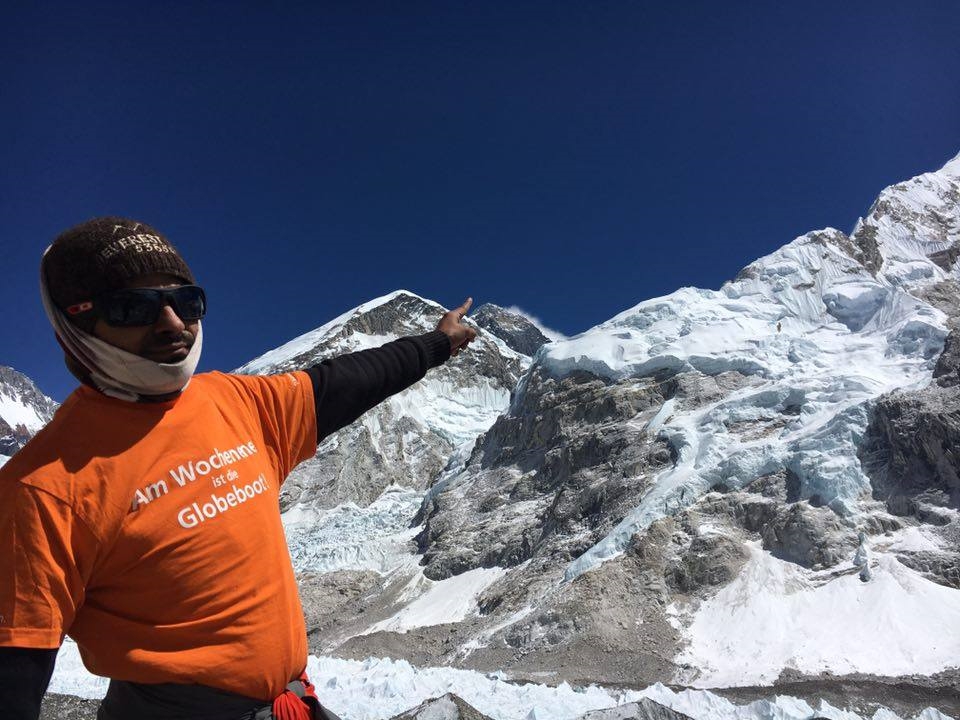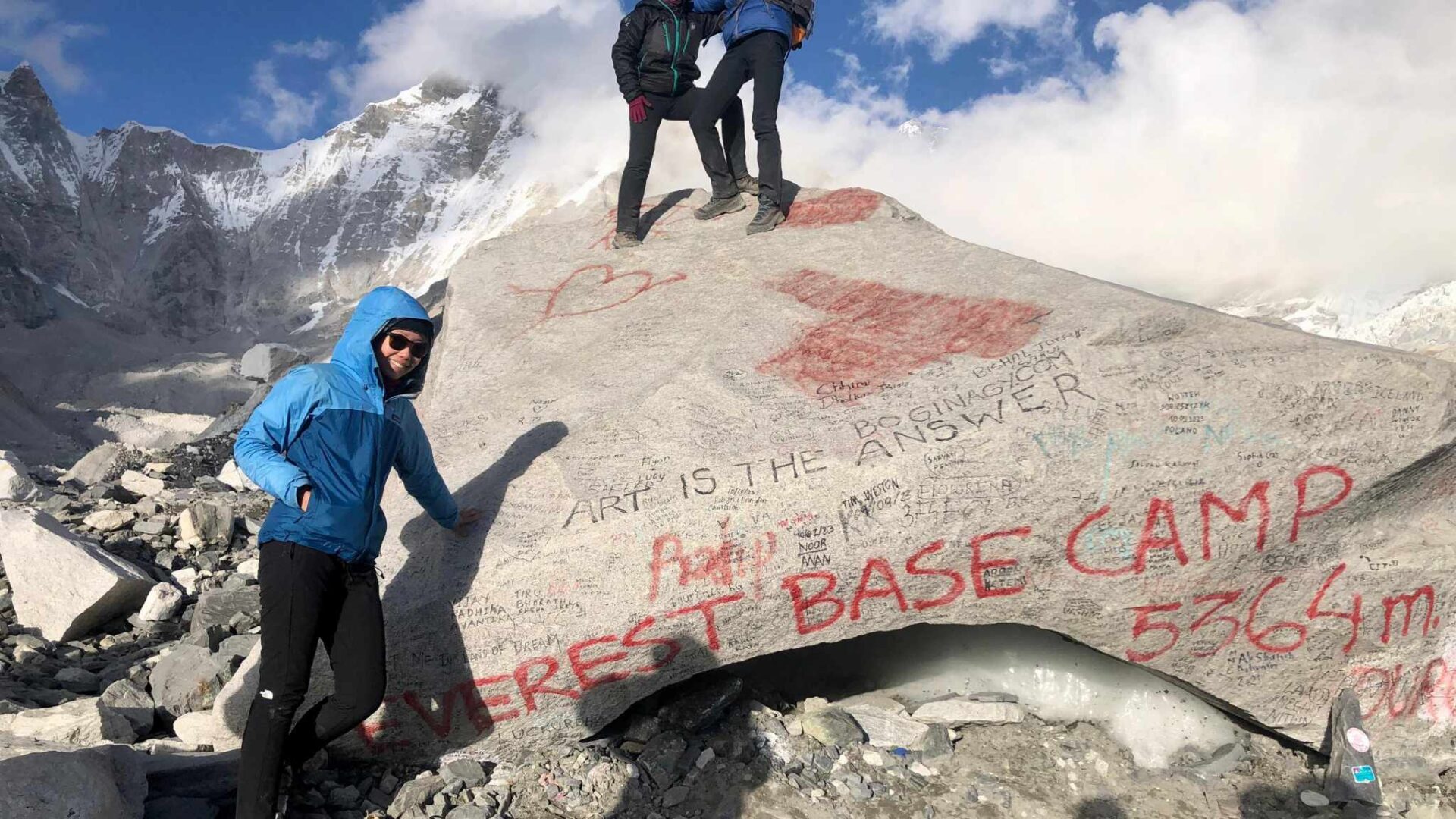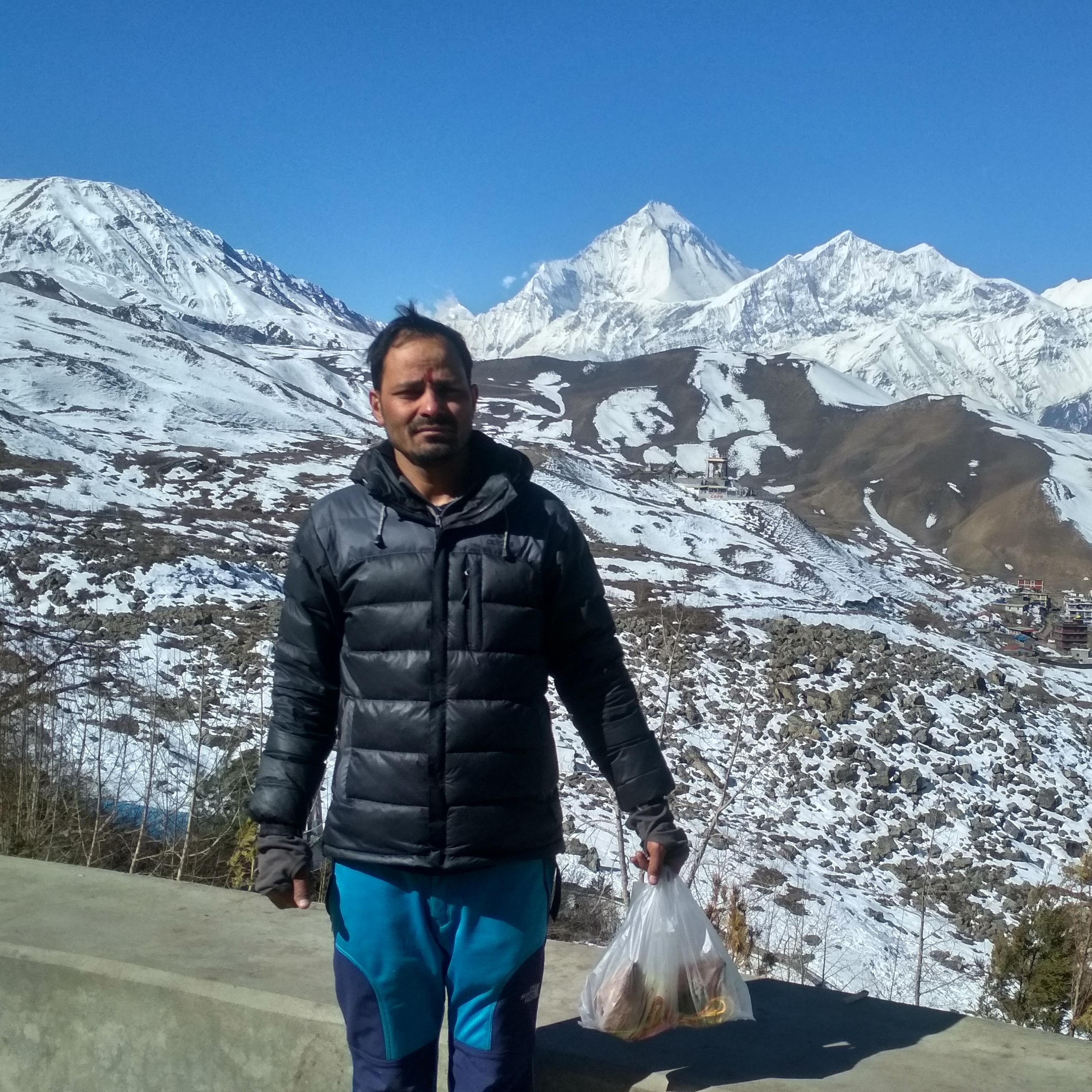Everest Base Camp Trek
Everest Base Camp Trek Highlights
- Mt. Everest, the highest mountain in the world at 8848 meters.
- Base camp on Everest in two weeks.
- A breathtaking scenic flight.
- Gorgeous scenes of verdant hills and towering snow-capped mountains.
- Breathtaking views of the sunrise and sunset over Everest from Kala Pathar.
- Discover the venerable Tengboche Monastery.
- Discover Buddhism and Tibetan culture.
- A variety of flower species and dense forests.
- The Khumbu glaciers and waterfall.
Everest Base Camp is situated in the Solukhumbu district of Nepal, at an elevation of 8848 meters (29029 feet) above sea level, Mount Everest is the highest mountain in the world. It is situated between Tibet, an autonomous region of China, and Nepal. The “standard route” approaches the summit from the southeast in Nepal, while the other approaches it from the north in Tibet. These are the two main routes for climbing. George Everest, a former Surveyor General of India, was honored with a name change for the mountain in the nineteenth century. Chomolungma is the Tibetan name, meaning “Mother Goddess of the World.” Sagarmatha is the Nepali sanskrit name, meaning “Peak of Heaven.”
Many climbers, including very experienced mountaineers, are drawn to Mount Everest. It calls for a great deal of prior mountaineering experience, a health certificate, equipment, and a qualified Nepalese guide. The majority of climbers rely on their own bottled oxygen because they are not used to the high altitude and low oxygen levels. For this reason, the region of Everest above 8000 meters (2600 feet) in elevation is referred to as the “death zone.” Altitude sickness and even brain swelling can strike climbers who stay in this area for extended periods of time.
By geological standards, Everest is young—between 50 and 60 million years old, according to Earth scientists. Sir Edmund Hillary, a mountaineer from New Zealand, and his Tibetan guide Tenzing Norgay were the first people to summit Everest on record. Together, they set the record when they ascended the mountain in 1953. On Mount Everest, the weather is extremely severe. The weather on Mount Everest was never easy to forecast. It never gets hotter than freezing. Thus, native plants and animals are scarce on Everest. The animals that have been discovered belong to a very small and rare species. such as the Himalayan Tahr, snow leopard, red panda, Himalayan bear, and goral. Similarly, major plants are birch, juniper, blue pines, firs, bamboo, wild rose, rhododendron, and hemlock etc.
What makes the Everest base camp trek special?
Experience the breathtaking beauty of Sagarmatha National Park and be treated to breathtaking views of four of the world’s six highest peaks: Mt. Makalu (8,470 meters), Mt. Everest (8,848 meters), Cho Oyu (8,201 meters), and Mt. Lhotse (8,516 meters). The renowned Everest Base Camp Trek takes you through the Khumbu Valley.
Trekking from Lukla to Base Camp, the classic route follows in the footsteps of Sir Edmund Hillary, Tenzing Norgay, and numerous other early Everest pioneers.
As a teahouse trekker, you will have the opportunity to stay in some of the world’s highest villages and learn about the customs and culture of the indigenous Sherpas, including their spiritual ties to the mountains.
You will get the opportunity to climb Kala Patthar, which will take you to a height of 5,500 meters, where you can see breathtaking views of Mount Everest.
Along the way, you will also have the opportunity to visit a number of Buddhist monasteries and learn about a culture that is deeply ingrained in history and customs and is closely connected to the mountains that provide you with breathtaking views.
Climate and weather
The weather in the mountains is erratic and constantly shifting. With an average temperature of 17°C, it is thought to be the coldest time of year. Everest Base Camp is suitable year-round. However, the various seasons offer unique ways to enhance your trekking experience. Thus, spring and fall are generally regarded as the ideal seasons to climb Everest. Trekking is also recommended during the monsoon and winter seasons.
Spring and Autumn
One of the best seasons to visit EBC is in the spring (March, April, May). Although it quickly warms up, the nighttime low of below freezing persists throughout. The views from the summit are breathtaking, the days are longer with plenty of sunshine and few clouds, and the weather is usually clear and bright. The monsoon rains have cleared the skies, making autumn (September, October, and November) one of the best seasons to visit Everest. The scenery is as serene and lush as ever. Although temperatures are rising to up to 17°C thanks to bright sunshine, it still feels colder due to strong winds. The heavier clouds are gone now, and the summit of the mountain is once more clearly visible from the base camp.
Monsoon and winter
At EBC, rainfall during the monsoon season (June, July, and August) is significantly higher than it is during the rest of the year. Although the temperature is high—it can get as high as 22°C—the increased rainfall can make the terrain muddy and difficult to navigate. This is the month for nature lovers and adventure seekers to go trekking. The trek is most enjoyable during the winter months of December, January, and February, which are also the months with the most snowfall and the coldest temperatures of the year.
Local culture and religion
Everest and other higher Himalayan regions are home to the Sherpa people, who are also joined in modern times by ethnic Tamang, Rai, and Sherpa occupants. The language is unique since it is spoken more often than not. Sometimes, though, it is written in Devanagari or Tibetan script. Speaking Nepali in addition to their original tongue, the majority of Sherpas reside in Nepal. Additionally, they are able to converse in one or more of the languages spoken by tourists and climbers.
They build gompas in order to carry out their religious rituals. The area’s first celibate monastery was Tengboche. There are numerous prayer walls and religious monuments in the form of stupas (domens) with rows of spinning prayer wheels that you will encounter as you stroll from one village to the next. Most people practice Buddhism. They primarily celebrate Mani Rimdu, a festival, along with Lhosar. The Tengboche monastery has a huge celebration for it.
Foods
An entire day of trekking at an altitude causes hunger! Fortunately, you can choose from a wide selection of hot cooked dishes at your teahouses every meal, including both western and Nepali options. The meals consist of foods and drinks that provide energy, such as rice, cereals, lentil soup, noodle soup, hot tea potato, etc.
Accommodation
The majority of lodgings in the Everest region are run by sherpas. The people who live in the Namche village are Sherpas. When you visit Namche, they treat you very well. Both welcoming tea shops and opulent hotels are nearby. Tented camping is still an option, although it is less common now that hotels and tea houses are so accessible. There are twin-sharing options for rooms. Every room has two beds but lacks an attached bathroom. During the trek, there are logdes with better room facilities and more opulent options. There are blankets, bed linens, pillows, and mattresses on the beds. The majority of them offer hot showers that are heated by gas, and some even provide buckets of hot water for bathing. Everywhere in the Khumbu (Everest) region has wifi. There is no guarantee of a good and consistent speed.
Travel Insurance
We highly advise you to obtain travel insurance prior to embarking on a hiking adventure. Verify that accidents that occur in high altitudes or overseas are covered by your insurance. While we make every effort to look after you, accidents happen occasionally and are beyond our control. Therefore, having insurance is ideal in the event of a medical emergency requiring a helicopter evacuation.
Guide and Porters
All trekking activities should be carried out with a government-licensed guide and porter, according to the Nepal Tourism Board. Our top priority is keeping you safe. For this reason, our porter and guide are committed to ensuring your safety while making your trekking experience in Nepal unforgettable. We prioritize the safety of our porters and guides in addition to yours. Notably, insurance facilities are offered to our guide and porter.
Altitude Sickness
Altitude sickness typically happens when you ascend to a high altitude too quickly. At high altitudes, your body tries to adapt to the lower oxygen levels and lower air pressure, which can cause symptoms like fatigue, headaches, and nausea. Here are a few strategies to help you avoid experiencing altitude sickness:
- Stop and rest where you are.
- Do not go any higher for at least 24 to 48 hours.
- Make sure you are drinking enough water.
- Do not smoke, drink alcohol, or exercise.
- Eating foods and drinking fluids that contain carbs such as bread, pasta, fruits, milk, rice, and so on.
Everest Base Camp Trek Itinerary
Arrival at Kathmandu and Transfer to Hotel
Early morning Drive to Ramechhap and Fly to Lukla and then trek to Phakding (6.2km/4 miles, 4-5hr walk)
Trek from Phakding to Namche Bazzar (7.4km/4.5 miles, 5-6 hr walk)
Acclimatization day at Namche Bazaar / Hike to Everest view hotel
Trek from Namche Bazaar to Tengboche (5.9km/3.6 miles, 5-6 hr walk)
Trek from Tengboche to Dingboche (9.1km/5.6 miles, 6-7 hr walk)
Acclimatization day at Dingboche
Trek from Dingboche to Lobuche (8 km/ 5.1 miles, 4-5 hr walk)
Trek from Lobuche to Gorakshep and hike to Everest Base Camp (7.3km/4.5miles, 5-6 hr walk)
Hike to Kala Patthar and Trek back to Pangboche (14.6 km/ 9.6 miles, 7-8 hr walk)
Trek from Pangboche to Namche (19.4 km/ 13.2 miles, 6-7 hr walk)
Trek from Namche to Lukla (27.5 km/ 17.1 miles, 7-8 hr walk)
Fly to Ramechhap from Lukla and Drive to Kathmandu
Departure at Tribhuvan International Airport
Everest Base Camp Trek Inclusions
What's included
- Airport pick up and drop by private car
- Three times meals a day- Breakfast, Lunch, Dinner with 3 cup of tea or coffee a Day During the trek.
- Accommodation in tea house during the trek.
- National park Trekking permits & local government permit and TIMS Card
- 2 Night hotel in Kathmandu B/B plan
- Domestic flight ticket from Kathmandu to Lukla to Kathmandu.
- A highly Experience, helpful, knowledgeable, friendly, English speaking well trained, government license holder Guide with all his salary, food, Drinks, accommodation, equipment, transport, and insurance.
- Strong, helpful, porters with proper safety equipment and walking equipment his salary, food, drinks, accommodation, transport & insurance, (one porter for two people & he will carry bag pack max 20-25kg).
- Arrangement of Emergency helicopter service (paid by your travel insurance company)
- First aids kit and Duffel bag
- All taxes and company service charge
Add-ons
What's not included
- International airfare and visa fees
- Lunch and dinner in Kathmandu
- Equipment (sleeping bag, down jacket, and trekking pole)
- Personal expenses of bar and beverage bills, wifi, hot shower, bottle of water, extra porters, laundry or any other things which are not mentioned by the company
- Your trekking gears and extra nights in a certain destination
- Your travel insurance which should include the emergency rescue
- Tips for your guide and porters
- Entrance fees during the sightseeing
- Extra expenses due to any event such as weather condition, flight delays, or strikes
Everest Base Camp Trek FAQs
How high is Everest’s Base Camp?
Travel by small plane (17–19 people occupy) from Kathmandu (1310m) to Lukla (2860m), which takes approximately 30 minutes. From there, begin your trek to the south face of Mount Everest Base Camp (EBC), which is located at an elevation of 5380m, or 17600ft, above sea level.
How difficult/challenging is this trek? Does it fit any trekkers?
This hike is on the moderate end of the trekking spectrum. Despite its steep ascents and rolling plains, the tour is usually doable even for inexperienced hikers of any age. However, the hiker needs to be in good physical shape. Prior to organizing this EBC Trip, it is suggested to get some training in order to cope with high altitude sickness. Since seniors and those at minimum age can still participate in this trekking, there is no set age restriction. Nevertheless, it is advised to be aware of the itinerary, route map, difficulty, altitude, action challenges, fitness, prescriptions, requirements, and additional guidance from news or blogs. Examine the necessary information prior to traveling to Nepal, as well as the trekking information when organizing this EBC trip there.
How far or long does it take to reach the EBC?
The entire trek to Everest Base Camp is 38.58 miles, or 62 kilometers. Reaching Everest Base Camp (EBC) will take 7 to 8 days, and returning to Lukla will take 3–4 days. Due to the high altitude and potential for AMS, the hike to EBC is typically slower; you will need to get used to the new heights. You won't walk more than 8–10 kilometers a day; as you hike farther, you’re walking pace will decrease. Due to flight cancellations resulting from inclement weather, it is advised to extend your stay in Kathmandu and begin the hike as soon as possible after arriving.
What is the standard itinerary, Budget, the best season for Everest Base Camp Trek, and Can I join a group?
The best seasons/months/times for the 12-day Everest Base Camp Trek are autumn (September, October, and November) and spring (March, April, May). Due to heavy snowfall in the winter (December, January, and February) and heavy rains in the summer (June, July, and August), EBC trekking can be particularly difficult during other months.
Yes, in regards to joining the group! You are welcome to join the group, but we must first view your available dates. Nonetheless, the Everest Base Camp hike can be completed alone, and each of our trek itineraries includes a single guide and porter.




